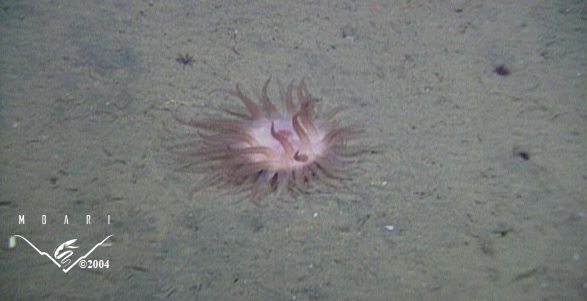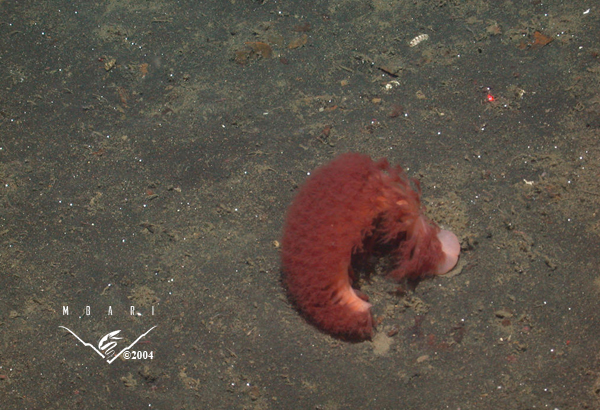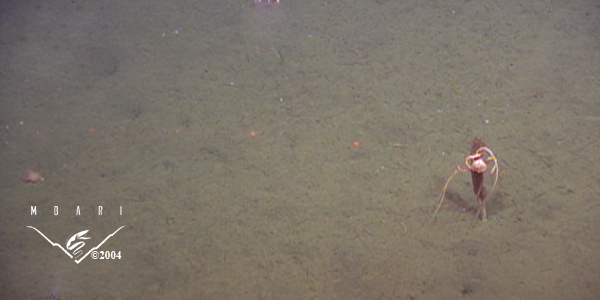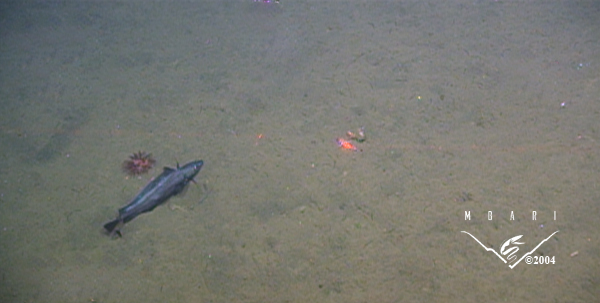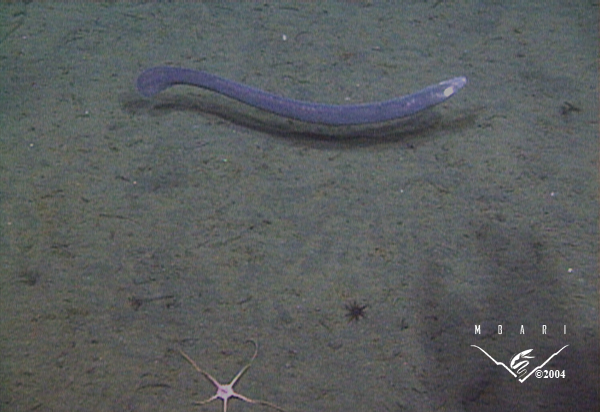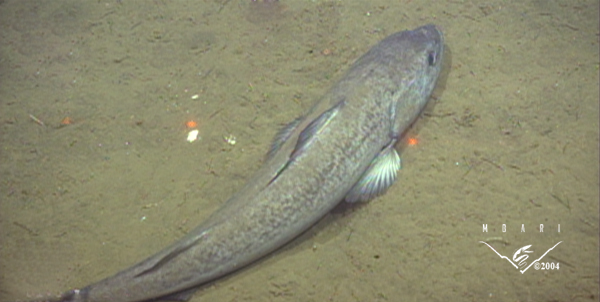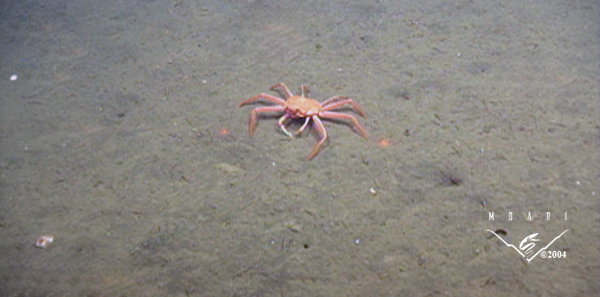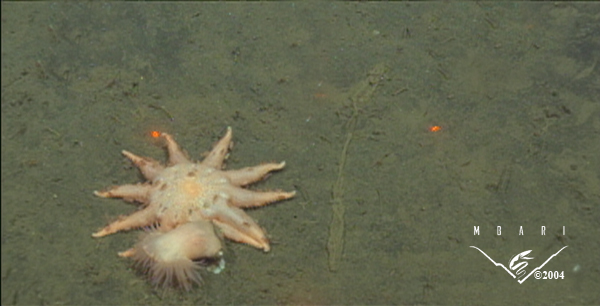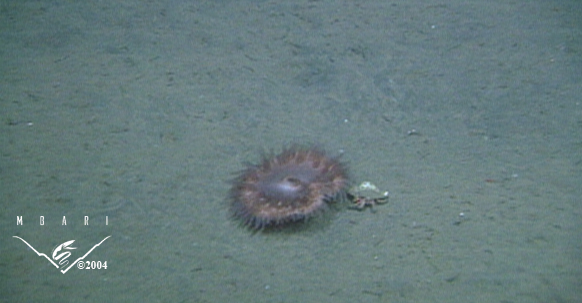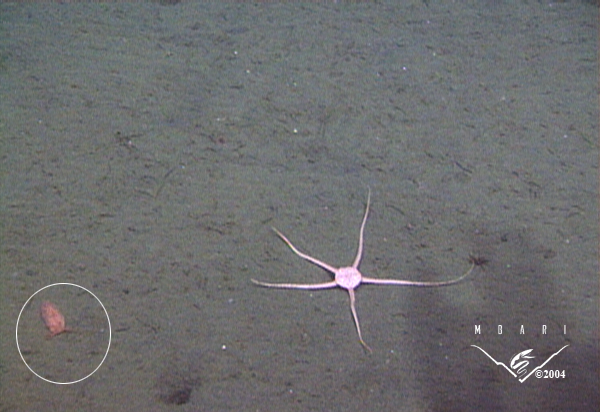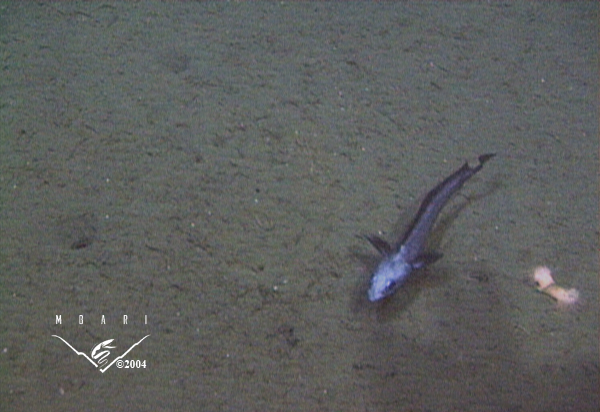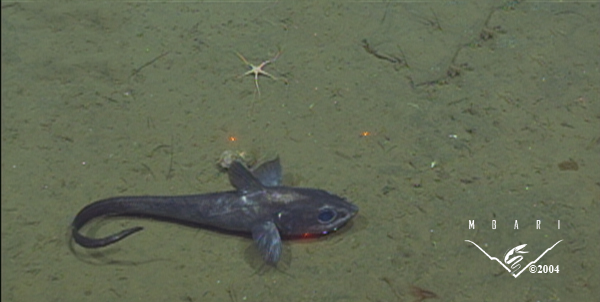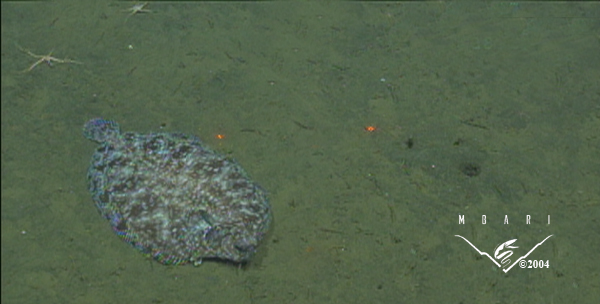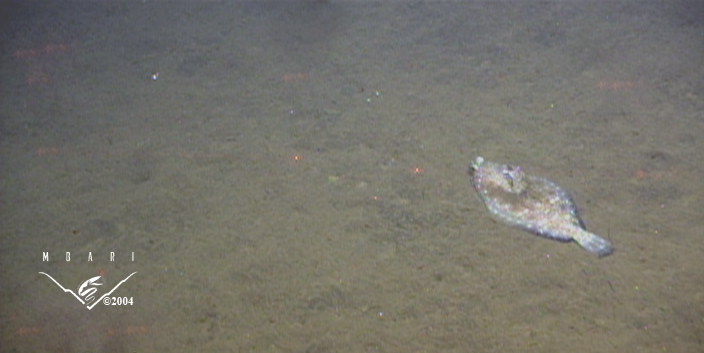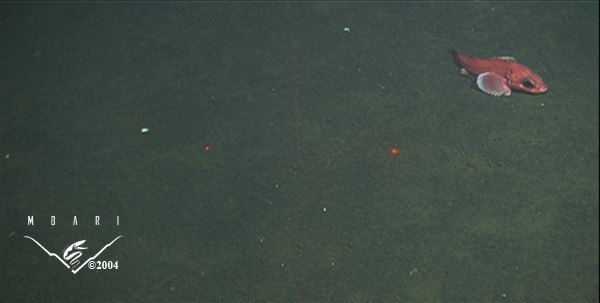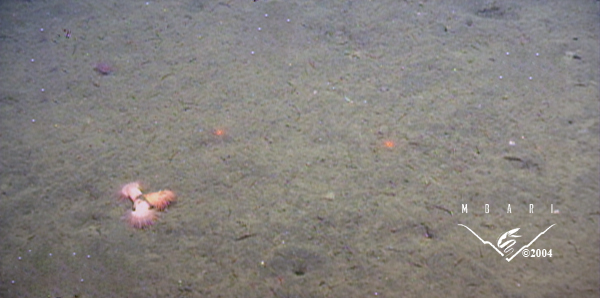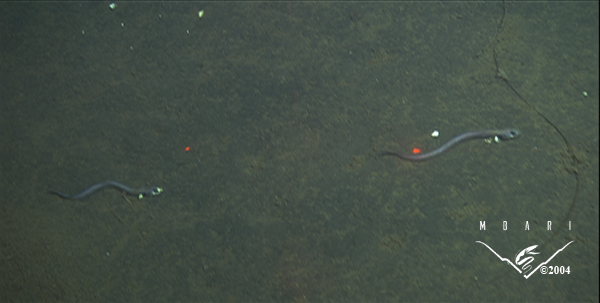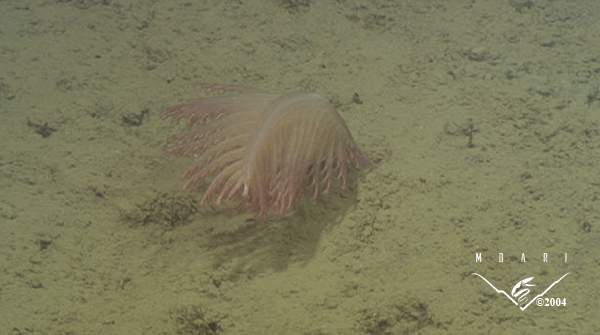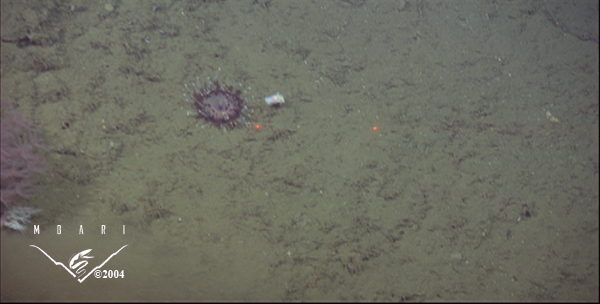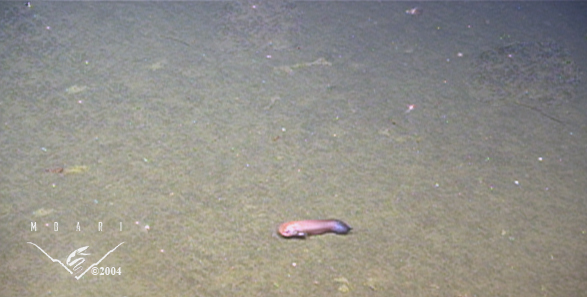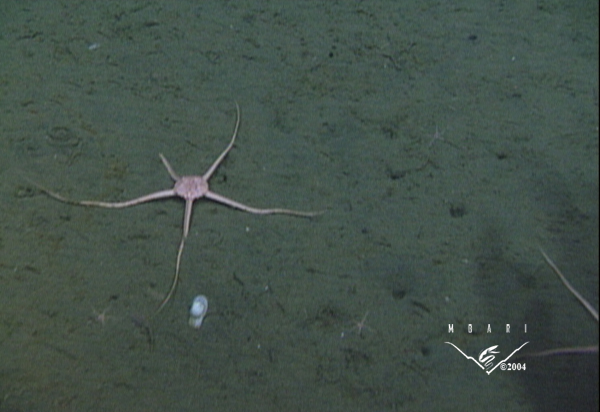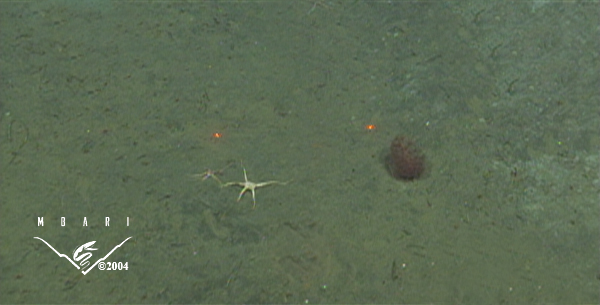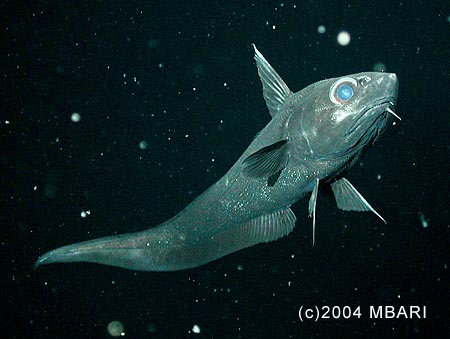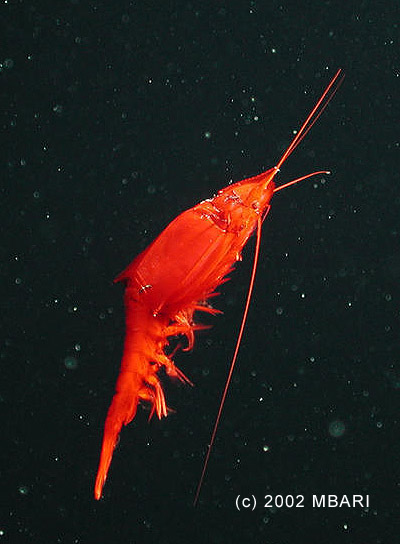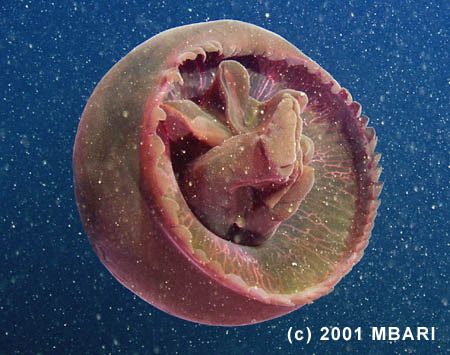 | Monterey Canyon Deep-sea Soft Sediment Megafauna 1000 m |
Anemone sp. 1 Family Actiniidae |
Feather boa sea pen Anthoptilum grandiflorum |
Sea pen and Red brittlestar Funiculina & Asteronyx longifissus |
Finescale mora Antimora microlepis |
Pacific hagfish Eptatretus stoutii |
Sablefish Anoplopoma fimbria |
Grooved Tanner crab Chionoecetes tanneri |
Smooth sunstar Solaster borealis |
Anemone and hermit crab Actinostolidae and Diogenidae |
Ophiuroid sp. 1 and ?Tritonia diomedea |
Hundred fathom mora? ?Physiculus rastrelliger |
Pacific grenadier Coryphaenoides acrolepis |
Deepsea sole Embassicthyes bathybius |
Dover sole Microstomus pacificus |
Longspine thornyhead Sebastolobus altivelis |
Isosicyonis sp. 1 (3 anemones on gastropod shell) |
Snakehead eelpout Lycenchelys camchatica |
Pennatula sp. 3 Pennatulacea |
Corallimorph anemone Corallimorphus pilatus |
Blacktail snailfish Careproctus melanurus |
Gastropod sp. 2 with Ophiuroid |
California sea pen Pennatula (phosphorea) californica |
Rattail fishWhen MBARI researchers explore the seafloor below 1,000 meters, the most common fishes they see are rattail fish such as this Coryphaenoides acrolepis, which was photographed in Monterey Canyon. Rattails are are very curious and will come to investigate any disturbance on or around the seafloor. Presumably this helps them find food in the darkness of the deep sea. Rattail fish are caught and sold under the more palatable name, "grenadier." However, the Monterey Bay Aquarium''s Seafood Watch program recommends that consumers do not purchase or eat grenadier because the fish grow very slowly and may not reproduce until they are 30 or 40 years old, |
Giant red mysid.The "giant red mysid," Gnathophausia ingens (also known as Neognathophausia ingens), grows to be three or four inches long. This shrimp-like crustacean was photographed by ROV Tiburon at around 900 meters (3,000 feet) below the sea surface, over the outer part of Monterey Canyon, where the water contains very little dissolved oxygen. Its bright red color looks black in the dim blue light of the deep-sea. It eats particles of debris and small dead organisms sinking down toward the seafloor. If attacked or startled, it emits a glowing liquid that may startle or distract hungry predators |
Big Red.Big red" is the nickname that MBARI marine biologists gave to this startlingly large jellyfish, which grows over one meter (3 feet) in diameter. After determining that it was an entirely new species of jelly, they named it Tiburonia granrojo after MBARI''s remotely operated vehicle Tiburon. This giant scyphomedusa would be hard to miss, except it lives deep below the oceans surface, at depths of 650 to 1,500 meters (2,000 to 4,800 feet). "Big red" has since been observed in deep waters off the west coast of North America, Baja California, Hawaii, and Japan. It uses its four to seven fleshy "feeding arms" instead of stinging tentacles to capture food |
from MBARI - http://www.mbari.org/benthic/softsediment1000m.html
